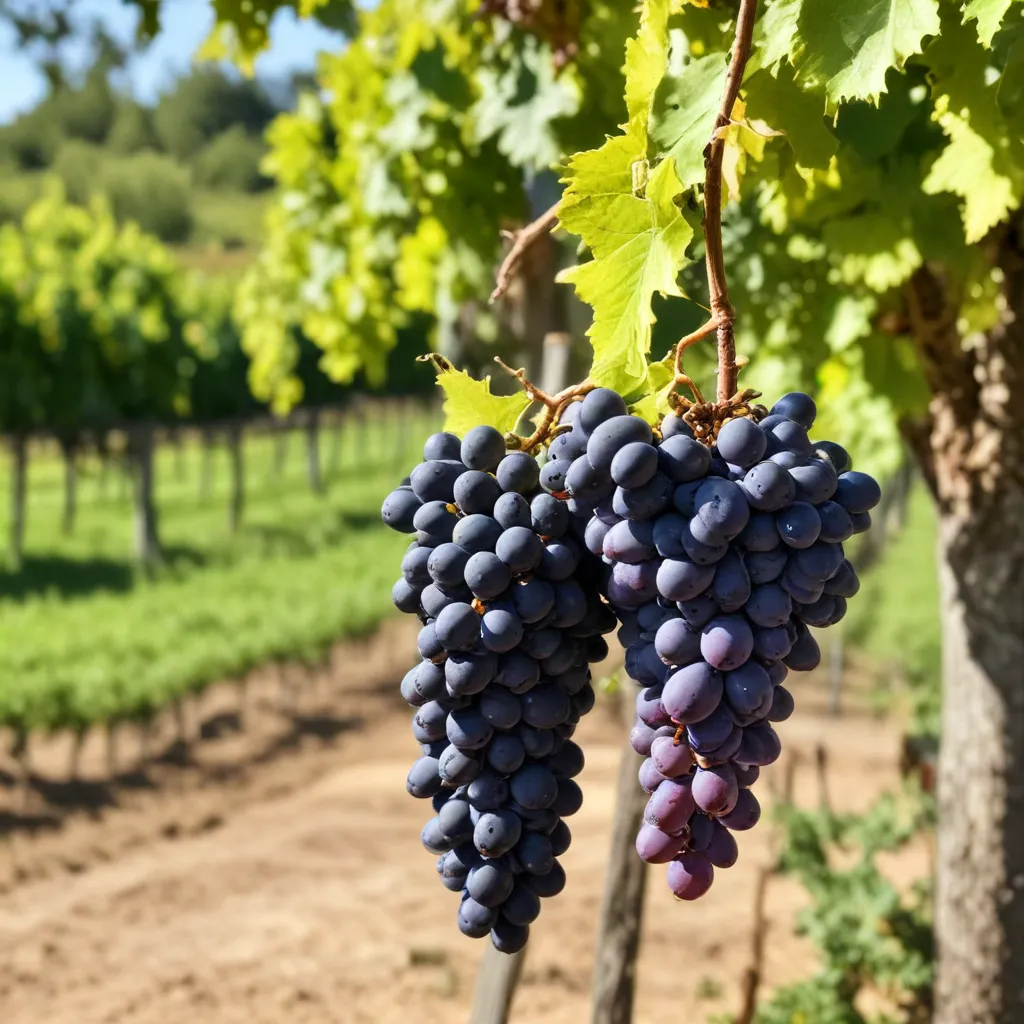
In the ever-evolving landscape of the wine world, a growing movement is championing the exploration and revival of rare and obscure grape cultivars. While the classics like Cabernet Sauvignon and Chardonnay continue to captivate wine enthusiasts, there exists a wealth of untapped potential in the vast array of unique grape varieties scattered across the globe. From the rugged terrain of New Hampshire to the sun-kissed slopes of the American Southwest, winemakers are embracing these unsung heroes, crafting wines that delight the senses and challenge preconceived notions about what a “typical” wine should be.
Distinctive Flavors and Aromas
One of the primary allures of these unique grape varieties lies in their ability to offer a sensory experience that departs from the mainstream. Take, for instance, the La Crescent grape, a cold-hardy white varietal thriving in the challenging climate of New Hampshire. This grape’s bright acidity and tart, citrus-driven profile lend themselves to the creation of wines that are remarkably refreshing and expressive of their terroir. Similarly, the Marquette grape, a red variety also well-suited to New Hampshire’s cool conditions, imparts a bold, complex character with notes of dark berries, spice, and even a hint of chocolate.
Across the country in the burgeoning wine regions of the Southwest, winemakers are uncovering equally captivating grape varieties. The Albariño, a grape more commonly associated with Spain’s Galicia region, has found a welcoming home in the diverse microclimates of Arizona, where it delivers a crisp, aromatic white wine with hints of stone fruit and sea salt. Meanwhile, the Mourvèdre grape, traditionally known for its prominence in Rhône-style blends, is showcasing its versatility as a standalone varietal in the sun-drenched vineyards of Southern Arizona, producing wines of remarkable depth and structure.
Viticulture and Terroir Considerations
The cultivation of these unique grape varieties is often inextricably linked to the challenges and opportunities presented by their respective growing regions. In New Hampshire, for example, the state’s harsh winters and short growing seasons have compelled local winemakers to seek out cold-hardy cultivars that can withstand the elements. This resilience not only ensures the survival of the vines but also contributes to the distinctive character of the wines, as the grapes adapt to the unique terroir.
Likewise, the extreme temperature fluctuations and diverse soil types found in the Southwest wine regions have shaped the development of these lesser-known grape varieties. The dramatic diurnal temperature shifts, with hot days and cool nights, preserves the grapes’ acidity and enhances the intensity of their flavors and aromas. Meanwhile, the region’s volcanic, alluvial, and loess soils provide a tapestry of minerality and complexity that is expertly woven into the final wine.
Embracing Diversity in the Wine World
The embrace of unique grape varieties is not merely a matter of expanding one’s palate; it is a testament to the wine industry’s growing appreciation for diversity and inclusivity. By reviving forgotten grapes and exploring the untapped potential of lesser-known cultivars, winemakers are challenging the dominance of traditional varietals and broadening the horizons of wine enthusiasts.
This innovative spirit is exemplified by producers like Flag Hill Winery in New Hampshire, who have championed the Cayuga White grape, a hybrid variety that showcases the essence of the state’s terroir in its bright acidity and vibrant fruit notes. Similarly, in the Southwest, winemakers are experimenting with unconventional winemaking techniques, such as the use of alternative fermentation vessels or the incorporation of unique viticultural practices, to coax out the full complexity and character of these lesser-known grapes.
Discovering Regional Wine Traditions
Alongside the exploration of rare and obscure grape varieties, the embrace of diversity in the wine world also shines a light on the rich cultural and historical traditions that have long shaped regional winemaking. In New Hampshire, for instance, the state’s deep connection to its agricultural heritage and commitment to sustainability are evident in the winemaking practices employed by local producers, who prioritize integrated pest management, water conservation, and soil health to ensure the longevity of their vineyards.
Similarly, the Southwest’s wine regions are deeply influenced by the diverse cultural tapestry of the area, with indigenous grape varieties and traditional production methods often serving as the foundation for a unique and expressive wine identity. The Albariño grape’s journey from Galicia to Arizona, for example, speaks to the global exchange of viticultural knowledge and the ability of these unique cultivars to thrive in unexpected terroirs.
Unconventional Wine Grape Profiles
As the wine world continues to evolve, the exploration of unique grape varieties has given rise to a new generation of wines that defy conventional expectations. These unconventional offerings, with their captivating textures, mouthfeel profiles, and atypical characteristics, are challenging the very notion of what a “typical” wine should be.
From the bold, tannic presence of the Marquette grape to the delicate, floral nuances of the Albariño, these unique cultivars are ushering in a new era of wine appreciation. Winemakers are no longer beholden to the familiar, but rather embracing the unexpected, crafting wines that inspire curiosity, delight the senses, and expand the boundaries of what is possible in the world of viticulture.
As you embark on your own wine journey, we encourage you to step beyond the well-trodden path and explore the wealth of unique grape varieties that are reshaping the industry. Whether it’s the crisp, citrus-driven La Crescent of New Hampshire or the robust, earthy Mourvèdre of the Southwest, these unconventional offerings promise to transport you to unexpected realms of flavor and aroma, ultimately broadening your understanding and appreciation of the diverse and ever-evolving world of wine.
